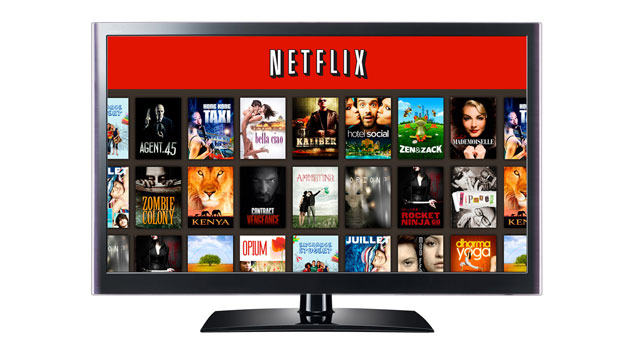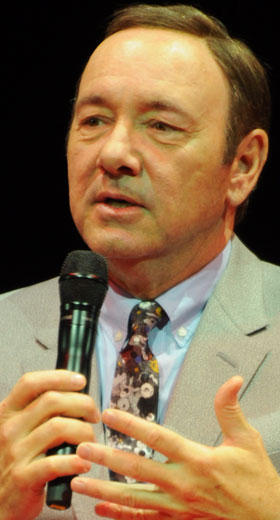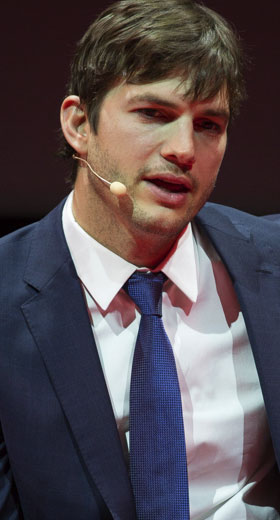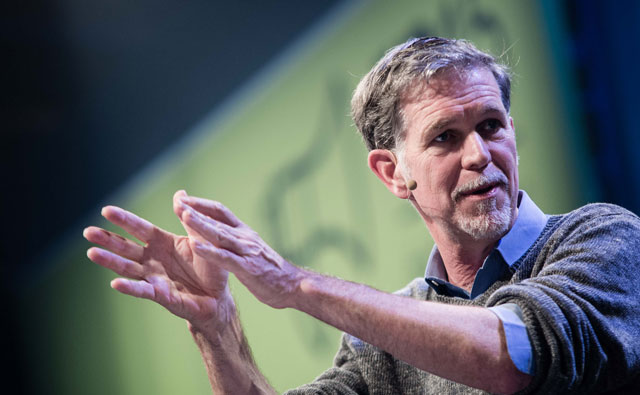
Netflix flexed its original programming muscle at a press event in Paris last week, bringing stars like Ashton Kutcher, Kevin Spacey and Ricky Gervais on stage to talk up its programming for the next few months. The company will spend around US$5bn on content in 2016 and plans to launch 600 hours of original programming during the course of the year.
As it positions itself to compete with the premium cable channels in the US and to conquer the international market, Netflix’s approach to TV programming is changing what sort of shows get made as well as how the content is structured. CEO Reed Hastings said that the goal is to return content to the original “binge” experience — reading a novel. Like a book, a show on Netflix should be able to go with you to the beach, your living room, or on an aeroplane.
Netflix has come a long way in a short time, focusing much of its original content on the long tail of television fans rather than on mass viewership. Though Netflix hasn’t yet produced a show with quite the prestige of, say, FX’s Fargo, AMC’s Breaking Bad, or HBO’s True Detective and The Wire, productions like Orange is the New Black and House of Cards have become pop culture staples.
Less interesting than the quality of the shows is the impact the shift to Internet TV has on how television is packaged and consumed. The fact that shows are streamed on demand means that writers, directors and producers have more flexibility than broadcast TV allows them. With House of Cards, for example, Netflix ordered two series from Spacey and his collaborators David Fincher and Beau Willimon without first commissioning a pilot.
The new watercooler moment
“We pitched the idea to all the networks. Every network thought it was an interesting idea and every network was engaged but every network insisted we do a pilot except one,” said Spacey. “Netflix gave us as creators a really long runway to tell the complex story we wanted to tell.” And even more radically, Netflix released the entire series at once for binge-viewing. “The watercooler moment is the entire series,” Spacey said.

Suddenly, shows don’t to be written with contrived cliff-hangers to bring you back next week in prime advertising time to find out what happens next. There are no recaps in case you missed last week’s episode. And if an episode is 10 minutes longer or five minutes shorter than usual, it doesn’t matter because there aren’t advertisements or a programming grid dictating the length of the show. Shows also need to be deeper and more re-watchable, because they’ll live on the online platform for a long time.
For Netflix, the question isn’t whether you’ll watch House of Cards or Daredevil during primetime, but whether you like the show enough to buy a subscription. It’s about having something in the line-up for everyone, rather than one or two things everyone will like. “They are servicing consumers rather than advertisers,” said Kutcher during a panel discussion. “They’re not just putting [a show] in a slot and crossing their fingers.”
Netflix doesn’t disclose viewership numbers for its shows, a choice it says protects the integrity of its content and spares content creators from anxiety. Benchmarking shows against each other by the number of people who watch them is a “horse race that deteriorates the quality of programming,” said Ted Sarandos, Netflix’s chief content officer. Without advertising sales, shows don’t need to resort to excess and sensationalism to drive spikes in viewership.
Niche audiences
In addition to the crowd-pleasing hits, most which have a slightly soapy scent or a faint reek of TV movie of the week, Netflix is investing large amounts of money in shows that are fairly niche. It picks up series orphaned by mainstream TV networks — the zany Unbreakable Kimmy Schmidt and revives old favourites with cult followings like Arrested Development and the Gilmore Girls.
Netflix also doesn’t shy away from difficult or esoteric content — it shops for content at festivals like the US indie showcase, Sundance, and put its full backing behind Beasts of No Nation, a child soldier drama that had a strong showing at most of the global awards. Later this year, it will stream the cheery sounding Khmer Rouge true-life drama, First They Killed My Father, directed by Angelina Jolie.
Behind the scenes, it’s the growing global subscriber base and the focus on data and personalisation that makes it financially feasible for Netflix to invest in content that has a relatively narrow appeal. Its algorithms try to match viewers with content they’ll like — each subscriber sees a different profile gate suggesting content he or she might enjoy. Eventually, it hopes that you won’t see any recommendations that don’t match your tastes.

These suggestions often target micro-genres such as political dramas set in Washington, DC or films with a strong female lead. There’s a human side to the big data — Netflix employs around 30 part-time “taggers” around the world to break films down by their genre, lead actors, setting, tone and other elements so that they can be categorised into highly specific subgenres.
Ricky Gervais, whose feature, Special Correspondents, debuts on Netflix on 29 April, said that the company’s rise signals the “return of the auteur” and the end of content-by-committee. The comedian said Netflix’s reach into a global audience of 75m subscribers allows him to get a large audience, but with no compromise to his content.
“A lot of comedies now are gross-out, lowest common denominator, and that’s because [film studios] want everyone to go to the cinema on the first day or it’s taken off the screen,” said Gervais. “It’s very homogenised and safe and it’s okay and people know what they are getting. [Studios] don’t take chances anymore. [Films and shows today] are focus-grouped to death.”
No filters
Kutcher echoed the sentiments in explaining why he and frequent collaborator Danny Masterson took their sitcom, The Ranch, to Netflix. “We’d heard the rumour around town that [Netflix] will let you try things that haven’t been done before,” he said. Though the show retains many sitcom clichés — it’s performed in front of a live studio audience and has a Two and a Half Men vibe about it — it takes some risks in its format and content.
For example, it casts actors who wouldn’t usually appear in this sort of sitcom, like 1980s Oscar nominee Debra Winger. There’s also no filter or rating system to prevent characters on the show from speaking in a more naturalistic manner, says Kutcher. Apparently, creative freedom amounts to being allowed to say “fuck” on a television sitcom. The innovation hasn’t spared The Ranch from reviews that range from lukewarm to scathing.
Increasingly, Netflix is also investing in content for the global market, encouraged by the success of globetrotting productions like Marco Polo, which brings together Asian, American and European talent. Hastings is especially proud of Narcos: managed by French production company Gaumont, directed by Brazilian filmmaker José Padilha, set primarily in Colombia, and inexplicably popular in Germany.
On 5 May, Netflix launches its first French television series, the Gerard Depardieu political drama Marseille, and, later this year, it will release a German family saga called Dark. Also on the slate this year is The Crown, about the early years of Queen Elizabeth II’s rein. Netflix declines to confirm the reported £100m budget for the show, but it does have production values that must leave the BBC green with envy.

The aim is to use Netflix’s global reach to create shows with a pan-regional or even global appeal, which means localised content produced on bigger budgets than most purely local TV networks can afford.
African content, eventually
Eventually, Netflix aims to produce more content for Africa, said Sarandos. For example, it has acquired the rights to Jadotville, a film starring Jamie Dornan (Fifty Shades of Grey) and set during the Katanga conflict in Congo-Léopoldville in Central Africa. The film was partially shot in South Africa. Netflix nonetheless has a long way to go before it can compete with the volume of South African content on ShowMax, its Naspers rival.
Hastings is keenly aware of the competition snapping at Netflix’s heels. Today, nearly anyone with a smartphone, a camera and a nose for good content is a potential rival. It’s not just other streaming services but everything competing for consumers’ free time. In addition to Hulu, HBO and Amazon, this means Facebook, YouTube, the local pub, network television, sports events and gaming consoles.
For now, it’s creators of quality content who are in the driver’s seat. Bidding is tight for the best content and no streaming service or network can afford to acquire everything. Indeed, Netflix is already cutting back on the amount of content it aggregates from other studios, presumably because it is spending the money on its own brands. There are productions Netflix would’ve liked to have secured. “But at what cost?” said Hastings.
This is a question many analysts and investors are asking, too. Netflix is burning cash at a faster rate now that it is primarily about making its own content rather than streaming other companies’ films and television shows. It now needs to prove that all this expensive content will translate rapidly into subscriber growth in the 190 countries where its service is available. — (c) 2016 NewsCentral Media




